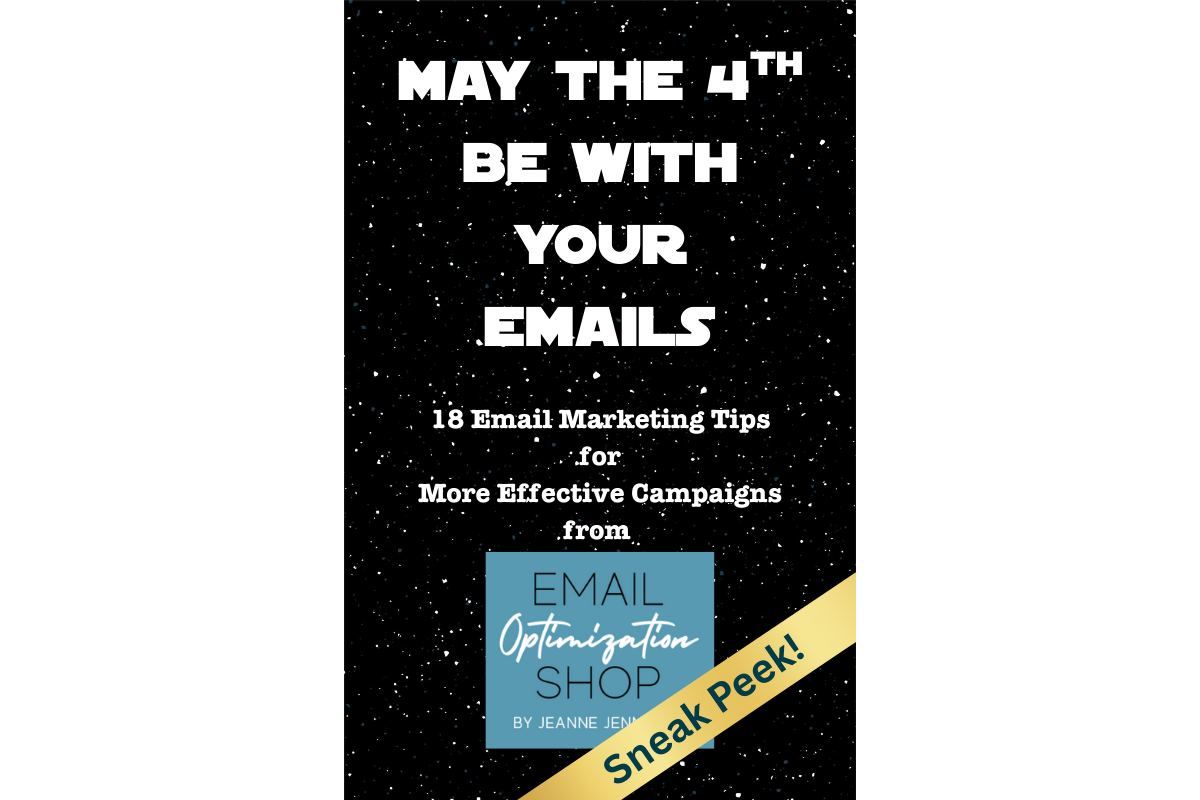Last week Chad White published a fabulous infographic all about Snippets on the Salesforce Marketing Cloud Blog — not only does it talk about why snippets matter (and then do!) but also about how to control what content appears as a snippet. One data point really jumped out at me — 54% of the email messages he reviewed had a poorly or not at all optimized snippet. That’s more than half!
It reminded me of a case study that I published on ClickZ back in 2008. The full text of the original article appears here; as a companion piece, see optimizing for snippets, which I published back in 2006.
These are truly Throw-back Thursday pieces, I realize. They are from a long time ago, yes, but the tips they provide to leverage snippet copy are still relevant today. At least for the 54% of email messages which don’t have optimized snippets. And I’ve included a bonus that didn’t appear in the original article, which is…
…the actual snippet copy from the case study as it appeared in Outlook AutoPreview (which is its form of snippet). Here it is:
Note: this is from the test send, the actual message didn’t have “Test Launch” in front of the subject line (“Meeting Request”). Also, the “Dear Christy” wasn’t technically part of the Johnson Box copy, it was the opening salutation, but I think it did contribute toward the boost in response.
Happy Throw-back Thursday — and Happy Thanksgiving! Here’s the original article:
An old direct marketing trick can help email marketing campaigns today.
A Johnson Box is a box commonly found at the top of direct mail letters, containing the key message of the letter. The purpose of it is to draw the reader’s attention to this key message first, and hopefully grab their attention, enticing them to read the rest of the letter…It has also been adapted to the email format, having the additional benefit of allowing the most important message in the email to be visible in the preview pane of an email reader. —Wikipedia, January 2008
Although there are some key differences between direct mail and email, sometimes old direct mail tricks can work wonders in the relatively new email channel. Case in point: in a recent test I did with a client, we added a Johnson Box to its email control. It generated a 220 percent lift in response rate! Here’s a brief overview of the results, along with some tips for making a Johnson Box work for you.
Overview of the Test and Results
The test was performed using an A/B split of the client’s house email list. One group received the control creative, a text-look letter; the second group received a test version of the control, which included a Johnson Box at the top. Everything else about the two creatives, including the sender address and subject line, were the same. This allowed us to get a clear read on the Johnson Box’s effect on response.
The goal of the email was lead generation. When you do lead generation, it’s important to look not only at the number of leads you receive but also at the leads’ quality. Unqualified leads waste time.
The test version generated more than three times as many leads as the control version, resulting in a 220 percent lift in the total number of leads generated. The next step in the sales cycle is to qualify the lead and, if the prospect meets the qualifications, schedule a product demonstration. To date, a higher percentage of the leads generated from the test creative has resulted in demos; here we’re seeing a lift of 11 percent over the control.
The icing on the cake is both versions of the creative are performing near or over their lead goals; the control is at 97 percent of its lead goal, while the test version is at 320 percent. These figures are two weeks post-send, which means we’ll probably see a few more responses before things quiet down.
Because the sender address and subject line were the same for both the control and the test, you’d expect the open rates to be comparable. In reality, the test version garnered an open rate 41 percent higher than that of the control. While I was initially puzzled by this, I think I’ve figured it out.
In late 2006 I first wrote about optimizing for snippets. Snippets are the first few words of your email and appear after the subject line in Gmail and in Outlook’s AutoPreview mode. When I viewed the test creative in AutoPreview mode, the Johnson Box copy was there, providing support to the subject line. AutoPreview, unlike the preview or reading pane, doesn’t trigger an email open (there are no images). So having the Johnson Box copy as a snippet in AutoPreview mode appears to have encouraged more people to open the email.
We also saw lifts from the test creative in the click-through rate (66 percent) and the click-to-open rate (18 percent). These little lifts all contributed to the big lift (220 percent) we saw in the response rate measuring leads generated.
To make a Johnson Box effective, you’ll need to look at location, format, and copy — and not necessarily in that order.
Location
For an email, a Johnson Box should appear at the top. It should be high enough that it’s clearly visible in the preview pane.
If you want the Johnson Box copy to appear after the subject line as a snippet, you must be sure it’s the very first copy that appears in your email. This means moving elsewhere any standard language about white listing or viewing the email online (since the control didn’t have this housekeeping language, we lucked into perfect placement).
Format
Johnson Boxes tend to be more than one line. That’s a key difference between them and headlines. They also tend to be centered above the rest of the copy and don’t take the full width of the email or letter. (See the link to the 1959 example below.)
If you want the Johnson Box copy to appear after the subject line as a snippet, be sure it’s text, not an image, because snippets are text only. Another snippet tip: forgo the actual box, as the top line may appear in the snippet instead of your copy. Although Johnson Boxes traditionally include a box around the copy, I omitted the box (for stylistic reasons) in this latest test and it did just fine.
The original 1959 direct mail Johnson Box contained six lines of text, including four bullet points. It comprised 36 words and 205 characters. In my latest test, the Johnson Box was two lines, no bullet points. The 20 words and 93 characters more than pulled their weight when it came to lifting response.
Copy
This is probably the most important aspect of your Johnson Box. The 1959 example highlights the letter’s key points. In my recent test, we included the product’s key benefit and the incentive.
If you want to leverage your Johnson Box copy as a snippet, consider how it works with your subject line; building on your message and avoiding redundancy are key to success. In this test, the subject line was a general appeal for a meeting. The Johnson Box copy was the perfect companion text to this; it provided two reasons, a long-term benefit and a short-term incentive, for the person to take action on the subject line.
Try this test with your email and let me know how it goes!
Until next time,
Jeanne







